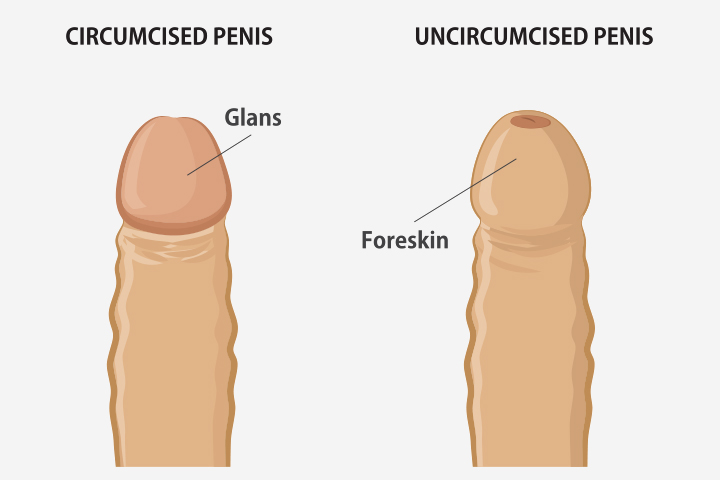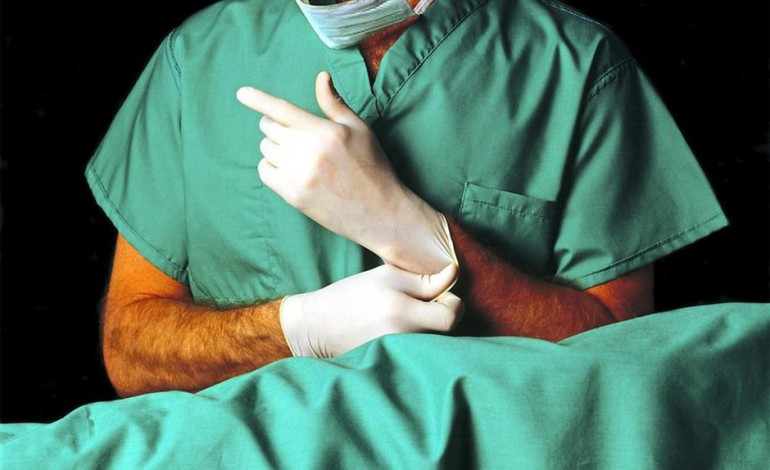Circumcision is the surgical removal of the foreskin, the tissue covering the rounded head (glans) of the penis. This form of surgery is usually done in male infants, but also in older boys and men, for the following reasons:
- It is usually done as a religious rite.
- It may even be done simply because of culture or tradition.
- It is recommended in older boys and men to treat phimosis (the inability to retract the foreskin)
- For the treatment of paraphimosis.
- Circumcision is done for treating swelling of the tip of the penis (balanitis).
- To treat an infection of the penis.
The Procedure
Contents
For newborn circumcision, the baby will be positioned to lie on his back, with his arms and legs restrained. After the penis and surrounding area are cleansed, a local anesthetic, e.g. lidocaine or xylocaine, will be injected into the base of the penis or applied to the penis as a cream. A plastic ring (clamp) will be attached to the penis, and the foreskin will be pushed back and removed. After the procedure has been done, the penis will be covered with an ointment (topical antibiotic or petroleum jelly) and wrapped loosely with gauze. The procedure generally takes about 10 minutes.

Circumcision for older boys and adults is slightly different. The doctor must always take informed consent, giving all the information about possible adverse effects and complications. The procedure in adults might need to be done under general anesthesia instead of local anesthesia. General anesthetics are drugs that cause lack of awareness to painful stimuli, sufficient to facilitate surgical applications in clinical and veterinary practice so that the patient undergoing the procedure does not feel pain. General anesthetics include propofol, etomidate, isoflurane, benzodiazepines and barbiturates, et cetera. The procedure is commonly performed using either the dorsal slit or the sleeve technique. The dorsal slit is especially useful in patients who have phimosis. The sleeve technique may provide better control of bleeding in patients with large subcutaneous veins. A dorsal penile nerve block, with or without a circumferential penile block, provides adequate anesthesia. Informed consent must be obtained. is removed with a scalpel, and it takes around 1 hour.
Length of Stay in Destination
Circumcision can be performed as an outpatient procedure. The typical length of time for this procedure is usually only 10 minutes. The patient can leave the same day as the surgery. However, it is important to have regular check-ups with the surgeon during recovery.
You should plan to stay in the area for at least 2 to 3 days after your surgery, this will allow for the initial recovery and follow-up check-ups and etc.
The doctor uses small absorbable stitches during the procedure which do not require removal. However, follow-up care is necessary for your treatment and safety. Be sure to make and go to all appointments, and call your doctor or nurse call line if you are having problems. It’s also a good idea to know your test results and keep a list of the medicines you take. Be aware that you will need to stay within the area until you get the go-ahead from your surgeon that you can travel back home.
Recovery Time
- Within minutes, hours or an entire day, the cut edges of the glans close up and bleeding stops.
- At first, i.e immediately after the procedure, the glans may appear glossy and red due to lack of exposure to the external environment provided by the mucous membrane that naturally covered it before circumcision. Once the membrane is exposed, it thickens and becomes darker.
- Your penis may swell and bruise for the first 2 days. The swelling usually goes down within 2 to 3 weeks after surgery. Keeping the penis upright aids in speedy recovery. This can be done by wearing underwear that best suits your need.
Aftercare
For Babies:
- The baby will be cranky and irritable after the procedure. Giving baby pain killers like acetaminophen will help.
- Leave your infant’s dressing (lubricant gauze) on for 24 hours after the circumcision.
- It is advised to apply a petroleum-based ointment (such as Vaseline) to the end of the penis after every bath and with each diaper change. This aids in healing.
- Go to the nearest emergency department if your child has excessive bleeding, fever, worsening redness or swelling, yellow liquid draining from the incision site or dysuria.
For Adults:
- Get plenty of rest and sleep so that you can heal properly and your body is not exhausted.
- Put ice or a cold pack on your groin for 10 to 20 minutes at a time. Try to do this every 1 to 2 hours for the first day. Put a thin cloth between the ice and your skin.
- Position your penis so that your underwear keeps it upright.
- It is advised to limit all sexual activity (both intercourse and masturbation) for 6 weeks, or until the doctor approves.
- You will probably have a few erections. It is advised to not stimulate the penis. The erections will not cause harm as long as they are left alone.
- Try to walk each day. Start by walking a little more than you did the day before. Bit by bit, increase the amount you walk.
- You may shower when you no longer have a bandage on your penis. You may also take short baths if you wish. However, after washing off, it is recommended that you dry the site of the incision.
- Avoid strenuous activities, such as bicycle riding, jogging, weight lifting, or aerobic exercise, for 4 weeks or until your doctor says it is okay.
- You can return to work and normal activities, including driving, when you are comfortable doing them.
- You can eat your normal diet. In the case of an upset stomach, best to try bland, low-fat foods like plain rice, broiled chicken, toast, and yogurt.
- Drink plenty of fluids (unless your doctor tells you not to).
Success Rate
Circumcision is a safe and preventive procedure to protect. There is compelling evidence that male circumcision reduces the risk of heterosexually acquired HIV infection in men by approximately 60%. Recovery might take longer and the risk of complications might be greater when done later in life.
Alternatives to a Circumcision Procedure
Circumcision is an optional procedure done in male infants. The procedure is done usually due to religious and cultural reasons and depends completely on the parents’ decision. It is not compulsory to get a baby circumcised.
Later in life, a man can choose for himself to be circumcised, or if a medical condition occurs, the doctor can advise a patient to be circumcised.
Circumcised vs. Uncircumcised – Which Is Better?
To check prices or to book a Circumcision Procedure in Thailand or anywhere else in the world, head on over to MyMediTravel now!

